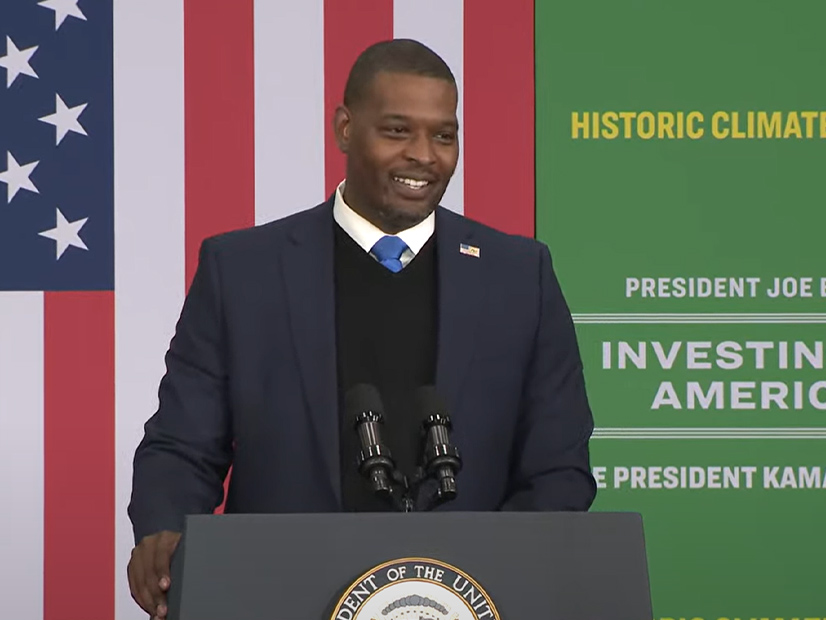After more than two years, Ameren Missouri has not delivered suitable redress for more than a decade’s worth of Clean Air Act violations via its Rush Island coal plant.
Lawyers for Ameren and the U.S. Department of Justice met again in U.S. District Court for the Eastern District of Missouri last week, where Senior District Judge Rodney Sippel appeared exasperated with Ameren’s proposed legal remedy for its excess pollution, which involves purchasing 20 electric school buses and 40 charging stations for the St. Louis area (4:11 CV 77 RWS).
Sippel said Ameren’s proposal remains inadequate for the scale of pollution and entreated the utility to offer concrete ideas for “what we can do, not just what we can’t do,” according to the St. Louis Post-Dispatch. Sippel also warned that “stopping violating the law is not a solution to the harm done,” referring to Rush Island’s closure later this year.
Following the session, the court ordered Ameren, DOJ and the Sierra Club to submit simultaneous proposed mitigation orders no later than May 1.
Rush Island has been at the center of a yearslong legal battle over its emissions. In 2007 and again in 2010, Ameren upped output at the plant by replacing boiler components; however, it didn’t install pollution controls as required for overhauled units under the Clean Air Act. Those violations triggered a 2011 lawsuit from DOJ on behalf of EPA, and another lawsuit in 2014 from the Sierra Club that named two other Ameren Missouri coal plants in addition to Rush Island. The litigation culminated in a court order last year for Ameren to either spend hundreds of millions of dollars installing pollution controls at Rush Island or shut it down. (See Hearing May Settle Ameren, DOJ Clash over Coal Plant.)
Ameren confirmed this week that Rush Island will close by mid-October 2024, per the court order.
“Ameren intends to comply with the court’s order, which requires a filing regarding mitigation by May 1, 2024. Our prior legal filing sets forth our position regarding the scope of mitigation,” an Ameren spokesperson said in an emailed statement to RTO Insider.
Ameren did not elaborate on whether Sippel’s view that it needs to do more will influence its final mitigation plan.
The utility has blasted DOJ and the Sierra Club’s recommended mitigation plan that includes Ameren purchasing 150,000 indoor air filters for the metro St. Louis area and building a renewable energy facility including at least 300 MW of wind or solar generation paired with at least 200 MW of battery storage somewhere in Ameren’s Midwest service territory. The facility should be built within five years, the two said, to “reduce regional reliance on [sulfur dioxide]-emitting generation infrastructure.”
In a recent court filing, Ameren argued it should not have to mount a “massive, multiyear construction project that would involve and require input and regulatory approvals from numerous stakeholders.” It also argued that a renewable energy and storage project is extraneous since it already “carefully” plans its resource mix under an integrated resource plan (IRP) process.
Ameren added that DOJ and Sierra Club’s ask ignores that after the court’s rulings on its liability and remedy, it “has substantially redirected its resource planning into renewable energy generation with enormous investments in wind, solar and battery facilities already planned for the coming years.”
“What plaintiffs seek — and what their proposal amounts to — is a penalty,” Ameren said.
In its legal filings, Ameren has touted an anticipated $28 billion in social benefits for retiring the plant early, instead of in 2039 as estimated in previous IRPs.
Rush Island operates sparingly under a MISO-designated system support resource (SSR) agreement, used to keep generation operating past planned retirement dates for the sake of system reliability. The SSR has been in place since 2022 and has been reupped annually, this time set to expire on Sept. 1. MISO has said its SSR cannot override a federal court order to cease operations, and the coal plant will go dark in October despite MISO previously saying it could require a Rush Island SSR into 2025.
The Sierra Club declined to comment on how a suitable remedy for Ameren should look but emphasized its joint filing with DOJ last month asserting that an early retirement of Rush Island does not mitigate the harm caused or atone for belated compliance.
“Ameren has … suggested Rush Island’s recent period of limited operations, coupled with its impending 2024 retirement, obviates the need for further relief. But Ameren’s emissions accounting is skewed, and the company’s description of its retirement decision touts Rush Island’s ‘early’ retirement while ignoring its belated compliance,” DOJ and Sierra Club wrote.
The two cited Joel Schwartz, a scientist with Harvard’s School of Public Health and an expert witness for DOJ in the case, who has said the social cost of Rush Island’s excess sulfur dioxide pollution is around $23,500 per ton. At 17,000 tons of excess emissions per year, Schwartz estimated that a single year of delay in installing scrubbers or shuttering Rush Island causes $300 million in societal harm to downwind communities.
Under Rush Island’s limited operating status as an SSR, DOJ and Sierra Club said that Ameren has “still has not begun to pay back the debt owed to the public health and welfare; it has merely slowed the rate at which it borrows from the health of downwind communities.”
The two further argued that Rush Island Units 1 and 2, which began operating in 1976 and 1977, were designed for approximate 30-year life spans and should have been fitted with pollution controls or retired 15 years ago to comply with the Clean Air Act.
“Ameren suggests this court should forgive its mitigation obligations entirely, and that it should get full credit for what amounts to a belated selection of an obvious compliance plan that the company should have begun years ago,” they wrote.
Meanwhile, Ameren is proceeding with a bid before the Missouri Public Service Commission to recoup the costs of retiring Rush Island from its customers (EF-2024-0021). (See Ameren Files to Recoup Rush Island Closure Costs from Customers.)

